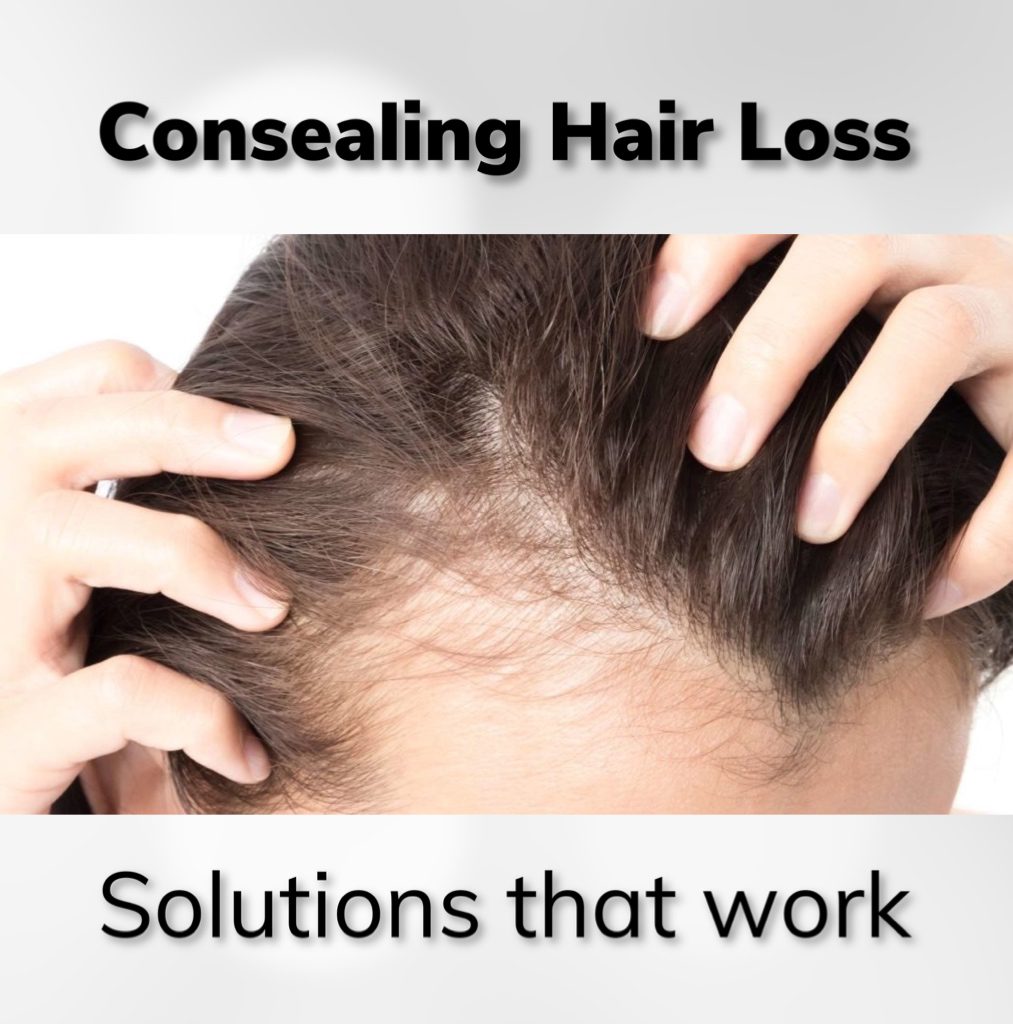Can you see your client’s scalp? Hair thinning stems from various conditions and ailments. Depending on the situation, you may find yourself researching cover-up options for clients who wish to see results instantly. However, before you or your client decide which method is the best fit, let’s weigh the pros and cons.

Hair Fibers
Hair Loss Concealing Fibers and Powders
While quick and affordable, tinted fibers or powders used to color visible scalp areas do not manage further hair loss. They are ideal for picture day, but continuous scalp makeup may cause more harm than good. Not to mention, hair concealing fibers or powders can give a matte appearance on the scalp when natural scalps have a bit more shine.

Hair Concealing Powder
Yes, you can find hair loss fibers or powders in various colors. But selecting a perfect match could prove difficult. Like makeup, this alternative hides what you don’t want others to see. By covering the scalp pores with fibers or powders, you are disrupting the scalp’s natural protective layer of sebum. Sebum is a hydrating oily substance that blocks bacteria, fungus, and other contaminants from getting under the skin.
If your client has been using these concealing products, it’s important to discuss their scalp cleansing regimen to avoid clogged pores. Those with sensitive skin should avoid using hair loss concealing fibers or powders, as it may irritate the skin further. If your client chooses this route, it is crucial to search for the root cause of the hair thinning to prevent further hair loss. Advise your client to undergo assessments from a trichologist.
Extensions

Hair Extensions
Another method to hide patchy areas on the scalp is to apply extensions. It may sound favorable, especially to those who wear their strands longer in length. But adding extensions to provide more volume can be even more treacherous than applying powder to the scalp. Extensions come in many forms, often using clips or a method of attaching hair to your existing hair. The weight or attachment of extensions will be pulling on the hair follicles. By wearing clipped-in pieces, you may be adding to hair loss if the existing hair follicles are weak and brittle. To protect existing hair strands, you must avoid tightly pulled hairstyles and extensions that can weigh heavy on the scalp.
Hair System
A trichologist or hair professional may suggest cover-up options that include specific styling of existing hair, starting a preventive hair care regimen, and adding a hair system (if necessary) to maintain the overall appearance of a full scalp. A hair restoration expert will style hair strands strategically to camouflage hair thinning while treatment protocols are implemented.

Hair System, Toupee’, Hair Piece
If the hair thinning has been going on for some time, you may need to consider adding a hair topper or hair system. This option is customizable and can be made to look natural with the proper amount of “fullness” to fit the age of the wearer. If it’s more realistic to add a hair topper that isn’t as full to match your age, you can bet your hair professional will try to provide the best solution for you.
Do not panic if this is the first time you or your client has noticed significant hair loss that reveals the scalp. Hair loss can be prevented and sometimes reversed in its early stages. When attempting to cover up hair loss, the first step is to make an appointment with a trichologist. There are plenty of options out there to address hair thinning. It is crucial to select a concealment option that not only hides your hair loss but treats and prevents further follicle damage. Hair is a direct reflection of health, so it is essential to look into what is causing hair loss.
At the first signs of hair loss, contact a hair restoration expert. A trichologist will use their knowledge of the hair and scalp to narrow down the reason for the hair loss. For example, your client could be experiencing temporary hair loss from a recent change in the body’s natural balance, or you could be dealing with a more aggressive condition. Whatever the case may be, don’t just conceal hair loss. Take steps to find solutions that will keep your scalp healthy and full as can be.






Leave A Comment